
Providing efficient and excellent customer service to an expanded number of customers is a delicate balancing act for a business owner. On the one hand, you want to be able to best serve as many new clients as possible. On the other hand, you also want to ensure your team is equipped to handle the additional workload without being overloaded. Here are four key ways to optimize the productivity of your existing resources as you scale your business for further success:
1. Study analytics about service management and productivity.
Data about completed work orders and performance in your business helps you see where new customer requests can be assigned to employees who have extra availability in their schedules. With the help of a field management software, you can gain increased insight on all outstanding work orders (and in-progress ones), allowing you to see what aspects of your workforce are the most productive. If output is lacking in any areas of your business, you can then create new policies and procedures to optimize productivity. In fact, running reports about productivity on a scheduled basis to your managers and administrators can further help promote increased visibility and accountability in your organization. These reports also help increase communication in your workforce and keep everyone on the same page about who is working on what. If certain work orders or projects are taking longer than expected, you can identify staff who have availability and then assign them to the project in question as well, which spreads out the workload more evenly and helps it get completed even quicker.
2. Reduce unnecessary manual processes for your staff in the field.
Typical business processes such as timekeeping, work order distribution, and paperwork can hold your employees back from being able to effectively carry out the part of your operations that matters most: Quality service to customers. In addition to providing critical details about your teams’ productivity, workforce management solutions can also digitally transform manual tasks. If your staff in the field were equipped with a way to clock in and out from virtually anywhere, receive instructions on their mobile devices nearly instantly, and complete forms from a smartphone or tablet, how much more could they focus on providing quality service each day? For every hour you eliminate that’s typically spent manually entering information or driving to/from the office, your team can repurpose those hours towards serving more customers, delivering a better customer experience, and driving more revenue for your business.
3. Shift unnecessary expenses to smarter investments.
Are you aware of any unnecessary expenses in your company’s operations? These may be time-theft and overtime costs, excessive idling using company vehicles, or paperwork expenses. Technology can identify areas where your budget is being misused. Reducing expenses in non-essential areas can help open up additional budget, which can better serve more customers, such as upskilling current employees, hiring additional employees, and/or obtaining new equipment.
4. Accept new customer requests digitally.
The easier you make it for your customers to request service, the better it is for your business. Providing a way for customers to digitally request service (whether via your company’s website or other means) can help you reduce the time and labor cost associated with telephony requests. Plus, you will have an ongoing queue of customer requests that your in-office staff can digitally review and assign field employees to each new work day. Your dispatchers will appreciate not having to answer the phone constantly, write down service request information, and then manually input it into your system. With technology, your dispatchers can accept requests electronically and simply add the data into your work order system. From there, your managers can survey the schedules of each employee and add the work orders to the schedules of staff members who make the most sense to address them (whether based on locations, specializations, or experience levels).
The above ideas (and the help of workforce management solutions) can help ensure your business is in a prime position to maximize its ability to take on as much new business as possible. Businesses run on efficiency and truly effective customer service management; how will you use this information to serve more clients and keep your costs in check?
Share this post:
About the author : Andrew Forest
Drew Forest is a writer, marketer, and content creator. He enjoys traveling, fantasy football, and watching Tampa Bay sports teams win championships.

















 Encore & Geotab Drive
Encore & Geotab Drive
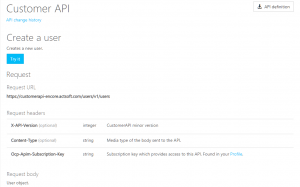




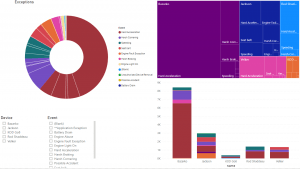

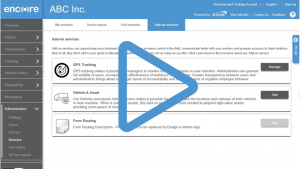
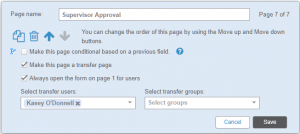
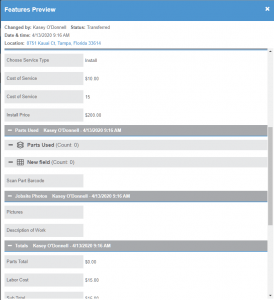

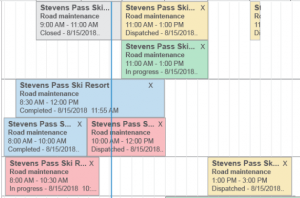

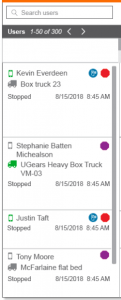
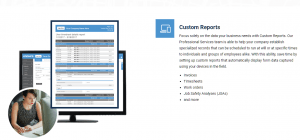
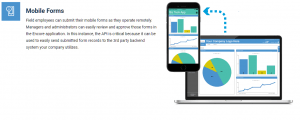





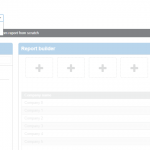

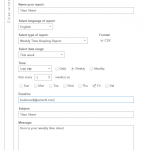
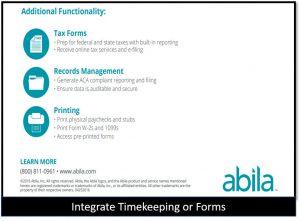
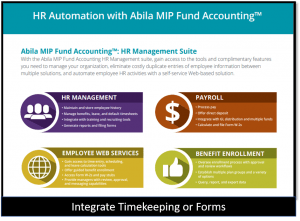




 Actsoft partnered with Odin to provide our solutions overseas, through payment processing integrations. Odin helps us support user management for our software; customers can also purchase our products through Odin’s billing platform.
Actsoft partnered with Odin to provide our solutions overseas, through payment processing integrations. Odin helps us support user management for our software; customers can also purchase our products through Odin’s billing platform.

 VisTracks powers our Electronic Logging Device (ELD) solution, which enables transportation businesses to easily automate their hours of service logs, remain in governmental compliance, and reduce their potential to incur costly fines.
VisTracks powers our Electronic Logging Device (ELD) solution, which enables transportation businesses to easily automate their hours of service logs, remain in governmental compliance, and reduce their potential to incur costly fines. Integration between Actsoft solutions and BeWhere’s software products is available. Take your team’s asset tracking, cellular data connectivity, and field insight a step further with effective, cross-application compatibility.
Integration between Actsoft solutions and BeWhere’s software products is available. Take your team’s asset tracking, cellular data connectivity, and field insight a step further with effective, cross-application compatibility.
 CalAmp tracking devices for vehicles and assets alike are compatible with Actsoft solutions, making it easy for you to efficiently monitor your equipment and fleet cars. Help your team enhance accountability, safety, and savings through a combination of easily installed hardware and intuitive software.
CalAmp tracking devices for vehicles and assets alike are compatible with Actsoft solutions, making it easy for you to efficiently monitor your equipment and fleet cars. Help your team enhance accountability, safety, and savings through a combination of easily installed hardware and intuitive software. Gain even greater insight into the daily activities of your fleet using the combination of Geotab and Actsoft. Geotab devices provide detailed data collection and seamless integration with our solutions; learn more about the ways your vehicles are being used daily with the power of this tandem.
Gain even greater insight into the daily activities of your fleet using the combination of Geotab and Actsoft. Geotab devices provide detailed data collection and seamless integration with our solutions; learn more about the ways your vehicles are being used daily with the power of this tandem.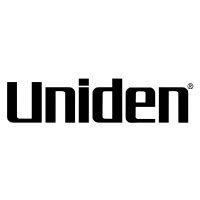 Our partnership with Uniden is ideal for companies looking to gain advanced diagnostics on their fleets. Uniden’s extensive product listing of car electronics like radios, dash cams, radar detectors, and in-vehicle communicators work in concert with Actsoft’s solutions to better connect your vehicles to the company headquarters.
Our partnership with Uniden is ideal for companies looking to gain advanced diagnostics on their fleets. Uniden’s extensive product listing of car electronics like radios, dash cams, radar detectors, and in-vehicle communicators work in concert with Actsoft’s solutions to better connect your vehicles to the company headquarters.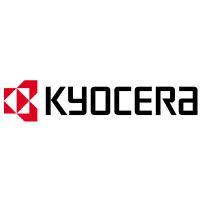 Kyocera offers a wide range of mobile devices, ranging in design from traditional phones to ultra-durable handset technology. Actsoft is able to equip organizations in a variety of different industries with solutions for improved business, while Kyocera supplies the technology they can flawlessly operate on.
Kyocera offers a wide range of mobile devices, ranging in design from traditional phones to ultra-durable handset technology. Actsoft is able to equip organizations in a variety of different industries with solutions for improved business, while Kyocera supplies the technology they can flawlessly operate on.

 Motorola’s mobile technology works in tandem with our solutions to provide extra versatility to your business practices. Coupled with our software’s features, Motorola’s reliable devices make connecting your workforce simpler than ever to do.
Motorola’s mobile technology works in tandem with our solutions to provide extra versatility to your business practices. Coupled with our software’s features, Motorola’s reliable devices make connecting your workforce simpler than ever to do.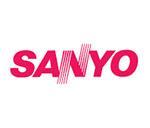 Actsoft and Sanyo teamed up to merge intuitive business management software with the technology of today. This partnership allows us to provide you with all the tools your team needs for improved workflows, better coordination, and optimized productivity.
Actsoft and Sanyo teamed up to merge intuitive business management software with the technology of today. This partnership allows us to provide you with all the tools your team needs for improved workflows, better coordination, and optimized productivity. We’re able to bundle certain solutions of ours (including our Electronic Visit Verification options) with Samsung devices to help your team achieve as much functionality as possible, while keeping rates affordable. Use these combinations for accurate recordkeeping, improved communication, and smarter data collection in the field.
We’re able to bundle certain solutions of ours (including our Electronic Visit Verification options) with Samsung devices to help your team achieve as much functionality as possible, while keeping rates affordable. Use these combinations for accurate recordkeeping, improved communication, and smarter data collection in the field.
 Our software is the perfect complement to Apple’s user-friendly technology. Equip your workforce with the devices and solutions it needs for optimized productivity during daily operations with Apple and Actsoft.
Our software is the perfect complement to Apple’s user-friendly technology. Equip your workforce with the devices and solutions it needs for optimized productivity during daily operations with Apple and Actsoft.
